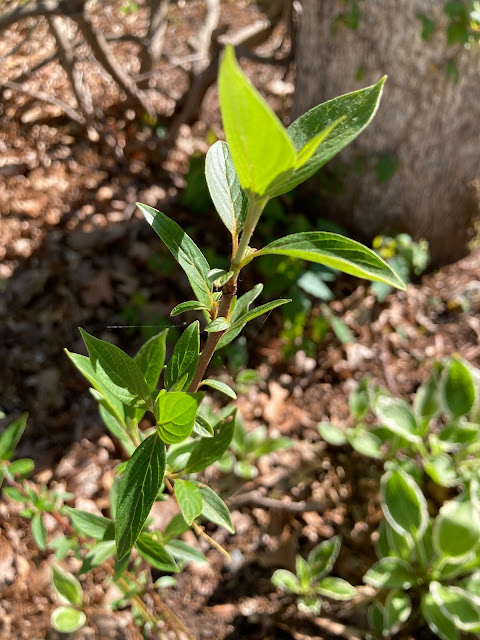June 9, 2022
In front yards and sidewalk cracks, at the edges of driveways and in overgrown garden beds, the plants one encounters on an afternoon walk in the suburbs can often provide clues about the history of land use. In some ways, the history of much of New England can be painted in broad strokes, with many subtle stories along the way. From the different land use practices of indigenous people/first nations, to the arrival of Europeans who made major, often violent changes to delicate ecosystems in pursuit of profit as they turned wetlands, forests, and meadows into farm fields and the raw stuff of industry, until the centers of profit shifted once again and farms and pastures turned into subdivisions and cities, each change leaves its fingerprints on the land and waters around us.
Often, as I walk around my neighborhood and similar areas I find myself imagining what these places looked like in these earlier eras, when the world moved at a slower pace, when the sidewalk beneath my feet was once a dirt path winding through the woods, and the stone walls that criss cross the yards and conservation land once represented the boundaries of neighboring farms. These flights of imagination are interspersed with reminders of the more immediate impact of people on the land in the form of non-native ornamental and in some cases very invasive and damaging plants. All of this begs the question as to why people put these plants in their yards and gardens. Part of the reason, undoubtedly, is that as humans we find things that are both somewhat unusual and colorful, to be attractive and so people plant them without much knowledge of the natural history or environment of the organisms they are adding to the land. In some cases these ornamentals spread slowly and can coexist alongside native plants, while in others they spread rapidly, disrupting and damaging the ecosystem. Such plants escape cultivated land and spread with abandon, such as Multiflora Rose, an admittedly eye-catching plant with lovely white flowers. But of course appearances are deceiving in this case, and while the visual appeal of this plant is undeniable, its damage to native planet communities is also clear.
When it comes to mitigating the impact of alien invasive plants in our present age we have some tools in place like import controls and state laws designed to limit the spread of these plants. But in some cases, alien invasives became established decades or even centuries before such controls were in place, and in the case of Multifloras Rose, which arrived in the US sometime in the late 1700’s and was likely used initially for erosion control, this organism has had over 200 years to spread throughout the country.
Multiflora Rose is not the only plant that was introduced with the best of intentions in the US, only to escape and prove less than benign. Another beautiful flower which has no place in our natural landscape is the Beach Rose (Rosa Rugosa), a plant I noticed for the first time while birding in Connecticut at Hammonasset Beach State Park. As I wandered along the sandy paths I stopped to take a number of photos of these beautiful flowers lining the walkways and nestled in among the dunes. Of course the spell was broken as soon as I used my plant ID app and discovered that it is the beauty of these plants which enticed horticultural enthusiasts into giving them a foothold in places like Connecticut and many other coastal areas of New England.
Even though I am under no illusion with respect to the changes that humans have made to the natural environment for thousands of years now, there is something about seeing so many plants out of place that I find particularly disheartening, perhaps because it reminds me of the profound (and extraordinarily dangerous, in the long run) disconnect that most people feel from the natural world. Fortunately, organizations like The Native Plant Trust in Framingham, MA and nurseries like Prairie Moon Nursery, which not only provide there actual plants that we can use to begin to restore our natural environment to some extent, but provide education and information that can help us to do in a sustainable and informed way.
And there are some places here I do find important native plants on my neighborhood walks, including Common Milkweed poking up beside an old stone wall each spring, and the clusters of litter white asters that I can count on each autumn. Seeing them does give me a little hope that these organisms can hang on, despite human neglect or interference, and if we give them and their kin a boost by encouraging people to plant natives and use organic methods, maybe we can not only restore some of the more crucial components of our native plant communities, but prevent the next wave of invasive plants from gaining a foothold in our environments.
Copyright Daniel E. Levenson 2022


.jpg)






